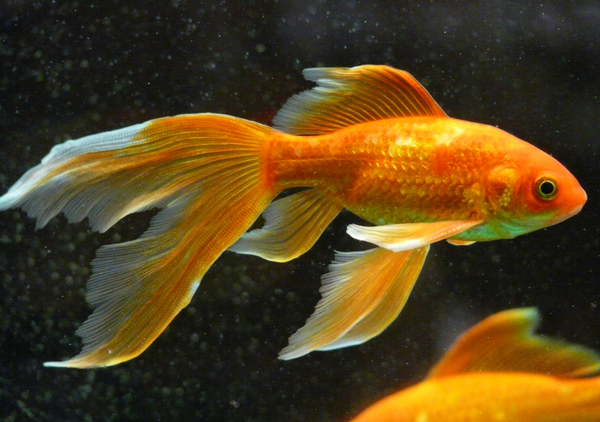 Aquariums are a great hobby and the perfect way to keep your very own piece of nature right in your home. Planted Aquariums - aquariums with live plants - are a great way to express your creativity and create an amazing, living display however you like. A planted aquarium definitely requires a little bit more planning as you need to decide on a layout for your tank prior to putting everything together. The following blog will provide a brief overview of planted aquariums and what makes them unique. Look for future blogs where I will discuss some elements of the planted aquarium in further detail.
Aquariums are a great hobby and the perfect way to keep your very own piece of nature right in your home. Planted Aquariums - aquariums with live plants - are a great way to express your creativity and create an amazing, living display however you like. A planted aquarium definitely requires a little bit more planning as you need to decide on a layout for your tank prior to putting everything together. The following blog will provide a brief overview of planted aquariums and what makes them unique. Look for future blogs where I will discuss some elements of the planted aquarium in further detail.
Tank Size
 The first step in setting up a planted aquarium is deciding on the size of tank you want. There are many options that come with additional supplies to help you on your way, Pisces recommends: Fluval 55 Gallon Starter Kit. The size of tank you choose is usually dependent on your skill level, time commitment, and budget. A larger tank may be more difficult for a beginner to set up and maintain, although it does provide you with more freedom for creativity. The next step in a planted tank is to choose an appropriate substrate. There are three main types of planted substrates, organic soils, mineral-based soils, and planted growth substrate.
The first step in setting up a planted aquarium is deciding on the size of tank you want. There are many options that come with additional supplies to help you on your way, Pisces recommends: Fluval 55 Gallon Starter Kit. The size of tank you choose is usually dependent on your skill level, time commitment, and budget. A larger tank may be more difficult for a beginner to set up and maintain, although it does provide you with more freedom for creativity. The next step in a planted tank is to choose an appropriate substrate. There are three main types of planted substrates, organic soils, mineral-based soils, and planted growth substrate.
Dryscaping
The next step in a planted tank is what we call dryscaping. This is the process of laying out your tank before adding the water. First, add any larger pieces of stone or driftwood. Next, you will add your plants, ensuring the roots are embedded in the substrate. When you are placing your rocks, wood & plants, there are a few factors to consider to improve the aesthetic of the tank, including:
- Using multiple styles of plants
- Symmetry, an optimal focal point should be around 1 : 1.62
- Shape, use the convex and concavity shapes instead of even leveled
- try to incorporate a foreground, middleground & background
- Large plants will take away from depth, finer leaves = larger scape!
At this point you will fill the tank with water and treat the water to remove chlorine. Pisces recommends: AquaPro Step 1 Tap Water Conditioner.
Growing Healthy Plants
Once you have your tank going, there are a couple things to keep in mind. Plant substrate is organic in composition so it is essential that for the first month, you perform 3-4 weekly 25% water changes, otherwise you may end up with a significant algae problem! Next, you’ll want some type of fertilization for the plants. There are many available supplements, each with its own function. Pisces recommends: Seachem Flourish as a comprehensive plant supplement, packed with elements and other nutrients. These supplements will help your plants grow nice and strong. Additionally, installing some kind of CO₂ system will help your plants flourish. These systems are available in different styles, depending on the size and type of aquarium you have. As for lighting, you’ll want to provide at least 3 watts per gallon.
Final Touches
 When dealing with a planted tank, it is recommended to use a tool rather than your hands. Some examples of these tools include trimming scissors, sand flatteners, and bottom release tools. Using these tools will ensure the preservation of your aquascape and will reduce potential damage. Pisces recommends: AquaVitro Aquascaping Tools. The final step in a planted tank is what we like to call a cleaning crew. A cleaning crew is a series of organisms designed to keep your tank healthy and in good order. Because plants can be very sensitive, a cleaning crew will limit the amount of maintenance you have to do and reduce the risk of damaging sensitive plant roots. Some organisms typically found in cleaning crews include algae-eating shrimp, catfish, assassin snails, and many more.
When dealing with a planted tank, it is recommended to use a tool rather than your hands. Some examples of these tools include trimming scissors, sand flatteners, and bottom release tools. Using these tools will ensure the preservation of your aquascape and will reduce potential damage. Pisces recommends: AquaVitro Aquascaping Tools. The final step in a planted tank is what we like to call a cleaning crew. A cleaning crew is a series of organisms designed to keep your tank healthy and in good order. Because plants can be very sensitive, a cleaning crew will limit the amount of maintenance you have to do and reduce the risk of damaging sensitive plant roots. Some organisms typically found in cleaning crews include algae-eating shrimp, catfish, assassin snails, and many more.
Want to learn even more about planted aquariums? Well, you're in luck! Stop by Pisces Pet Emporium and ask to speak to one of our two planted tank EXPERTS, Norm & Ashley! We also welcome you to send us a message on Facebook with any questions you may have.




